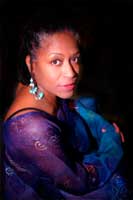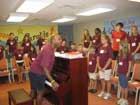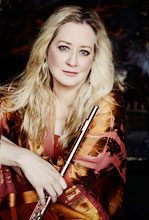Haydn and Dvorak kick off the Beaufort Symphony Orchestra’s new season.
The Beaufort Symphony Orchestra will open the 2013-2014 Season with “The Last Word” of two powerful composers, Franz Joseph Haydn and Antonin Dvorak. Written some 100 years apart, their last symphonies are among the most celebrated by musicians and music lovers alike.
Haydn’s Symphony No. 104, popularly known as “The London Symphony,” was composed in Vienna in 1795, following a stay in London during which he composed the first six of the “London” series. Dvorak’s Symphony No.9, known as “The New World Symphony” was composed in 1893, while he was living in America. Both composers had accepted lucrative positions in these foreign lands, Haydn at the offer of a commission to write six symphonies, which later increased to 12, and Dvorak with a position as director of the National Conservatory of Music in America.
Haydn a friend of Mozart and teacher to Beethoven
Often called “the father of the symphony,” Haydn was one of the most prolific and prominent composers of the Classical period and a close friend of Mozart and a teacher to Beethoven. Recognized as a prodigy by his parents, he left home at six years of age to begin his musical education in his native Austria. Aristocratic patronage was crucial to the career of a composer and in his adult life Haydn was supported by his patron, Prince Nicolaus. By the time the prince died in 1790, Haydn was famous and financially secure, but the lure of the London commission a few years later was too attractive to turn down. And a good thing too, because otherwise he might not have written this last symphony that debuted at the King’s Theatre in London in 1795 to the audience’s resounding approval.
Haydn’s final “statement”
This last symphony was the main event – the finale – of his farewell concert that night and everything about it projects the feeling of a “statement.” He was a master of the unexpected and this work does not disappoint. Alternating between grand proclamation and poignant pathos, it is also cheerful and in good humor with a sense of uplifting celebration – a mature work of a genius!
Dvorak’s most popular symphony
Dvorak composed his best-known work and last symphonic composition, “New World Symphony,” in 1893. He was one year into his three-year residence in New York as director of the National Conservatory of Music in America, and missed his beloved homeland of Bohemia very much. With all the forces of a 19th century orchestra, this symphony travels the entire spectrum of emotions, from profound sorrow, loneliness and despondence to exultation, exhilaration and hope. Its simple but elegant melodies were influenced not only by the folk music of his native country but also by the Native American and Afro-American music he discovered in America. According to his writings, he wrote original themes embodying the unique qualities of American music and developed them with all the resources of modern rhythms, counterpoint and orchestral color. Of particular note is the New World’s Second Movement, “Largo,” the theme from which a pupil of Dvorak’s later adapted the spiritual-like song, “Goin’ Home.”
“New World Symphony” went to the moon
The First Movement, “Adagio,” evokes the feeling of being carried far away from a familiar place with sadness, fear, suspense and then hope. And it is this emotional reaction to the symphony that well could have appealed to Astronaut Neil Armstrong in 1969 when he took a recording of it with him on Apollo 11, the first manned landing on the moon. Wow! Can you imagine listening to it while peering from your capsule into outer space? At the symphony’s premiere at Carnegie Hall in 1893, the audience was so enthralled with the composition that they cheered their approval at the end of each movement – so much so that Dvorak felt obliged to stand up and take a bow each time. We think he would have given a nod to Neil as well.
With two blockbuster symphonies like these to usher in the new season, the BSO is looking forward to a packed house at both performances, Thursday, October 10, at 7:30 p.m., and Sunday, October 13, at 3:00 p.m. All tickets are $37.50 and available one hour prior to curtain at USCB Center for the Arts at 801 Carteret Street , Beaufort, SC, or call and reserve your seats today at 1-800-595-4849. You can also go to our website at www.beaufortorchestra.org for a seating chart and to order online. To ensure that you won’t miss a performance you can order season tickets on line or by downloading a subscription form to mail in.
Beaufort Symphony Orchestra 2013-2014 Season
“The Last Word” “Fa LaLaLaLa”
Oct. 10, 7:30 p.m. Dec. 5, 7:30 p.m.
Oct. 13, 3:00 p.m. Dec. 8, 3:00 p.m.
“Beethoven Bash” “Amour Amour”
Feb. 27, 7:30 p.m. May 1, 7:30 p.m.
Mar. 2, 3:00 p.m. May 4, 3:00 p.m.







